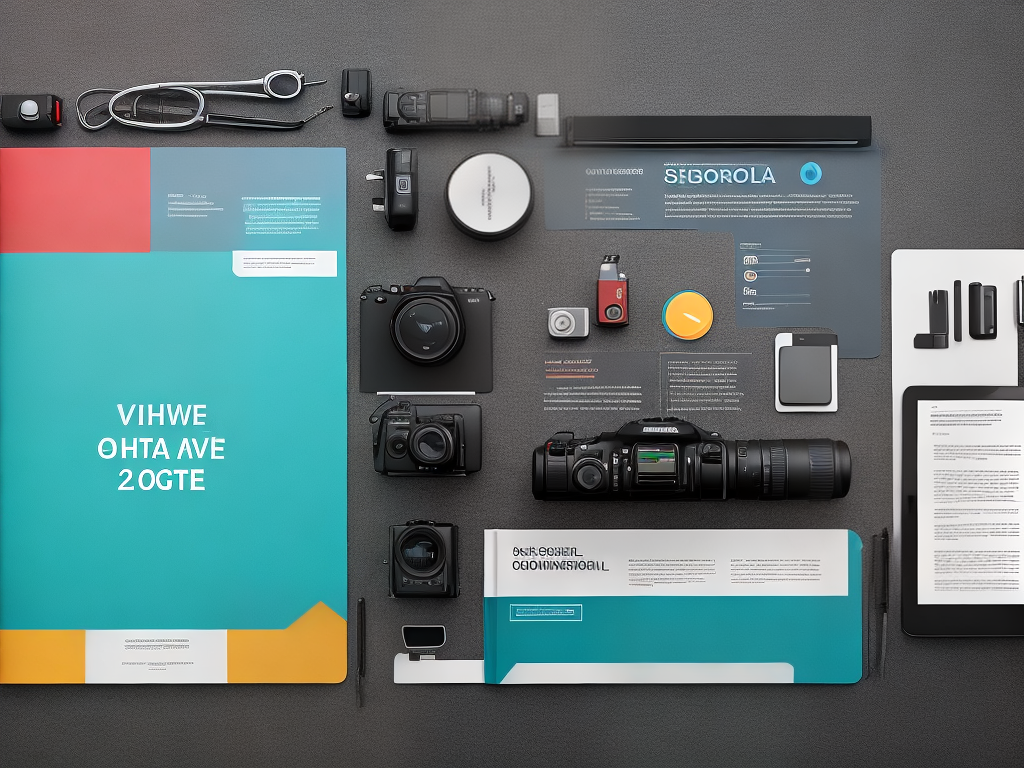Hey there, it’s time to level up your SEO game!
Infographics are an incredibly powerful tool for boosting your website’s visibility and performance in search engine rankings. With the right information presented in a visually appealing way, you can maximize your reach and ensure that more people find what they’re looking for on your site.
In this article, I’ll show you how to use infographics as part of your overall SEO strategy so that you can get the most out of them.
Let’s dive in!
Introduction To Infographics
I’m sure you’ve heard of infographics, and probably seen a few. They are visual depictions of information or data, usually in the form of charts and graphs. Infographics have become increasingly popular over the years as they give us an easy way to digest complex topics quickly.
Using infographics for SEO can be incredibly powerful, if done correctly. It allows businesses to communicate their message more effectively by providing users with valuable content that is visually appealing and easily shareable. When used strategically, it can help businesses increase website traffic, build brand awareness, generate links, and improve search engine rankings.
Infographics also provide businesses with an opportunity to stand out from their competition while engaging potential customers. By creating unique visuals that tell a story about your product or service, you can capture the attention of your target audience faster than traditional methods like text-based articles do.
Additionally, including keywords within your infographic will not only make it easier for people to find on search engines but also create internal relationships between related terms which helps boost page authority.
Creating effective infographics requires careful planning and execution – but when done right it has the power to really drive up engagement levels across all channels.
So what are you waiting for? Let’s explore how using infographics can benefit your SEO efforts!
Benefits Of Using Infographics
I’m sure you’ve heard the saying: ‘A picture is worth a thousand words.’ That’s what infographics are all about. They’re visual representations of data and information that quickly communicate ideas to your audience in an easily digestible way.
But they can also be incredibly useful for SEO (Search Engine Optimization). Here are some benefits of using infographics:
Firstly, infographics have the potential to go viral. People love interesting visuals, so if your infographic resonates with people, it could spread across social media platforms and result in more website visits and customers.
Secondly, search engines like fresh content, which means publishing regular blog posts or articles isn’t enough nowadays. Creating an infographic allows you to offer something new and exciting while still providing valuable content to your readers.
Thirdly, having an effective use of keywords will help improve your ranking on search engine results pages (SERPs). This is because when someone searches for a particular term related to your business – such as ‘SEO tips’ – you want to appear as high up in the SERP rankings as possible. An eye-catching infographic paired with relevant keywords can do just that.
Finally, even though creating quality content is essential for improving organic traffic from search engines, many businesses struggle to produce unique pieces consistently. By adding images and graphics into the mix, you’ll make things much easier for yourself!
Infographics offer numerous advantages when it comes to SEO, but now we need to look at how you can create engaging ones…
Creating Engaging Infographics
Now that you understand the benefits of using infographics, let’s explore what it takes to create an engaging one. It’s like a game of chess – each move must be precise and strategic in order for success.
To make your infographic stand out from the crowd, here are five key points:
-
Brainstorm ideas to find the right topic
-
Research reliable sources of information
-
Utilize powerful visuals such as illustrations or photographs
-
Employ meaningful fonts and colors to draw attention
-
Ensure readability by keeping text concise and clear
These elements should work together like pieces of a jigsaw puzzle – they need to fit perfectly in order for the picture to look complete. If all goes well, viewers will be captivated by your message and inspired to take action.
Quality content is essential when creating an effective infographic; however, it needs to be presented in an attractive design in order for people to actually click on it.
Colors and layouts can have a huge impact on whether someone reads or skips over your masterpiece. Therefore, spending extra time perfecting these details will go a long way!
With careful consideration given to both form and function, you’ll have no trouble designing an eye-catching piece that accurately conveys your message.
Designing An Eye-Catching Infographic
Creating an eye-catching infographic for SEO can be a daunting task, but with the right approach you can make sure that your message is seen by the viewers.
The first step to creating an effective infographic is to design its visual appeal. Visuals should be used to grab attention and engage people’s interest in what you have to say; they should also represent your brand or organization’s mission and values. When designing visuals, it’s important to keep them simple while still making them visually engaging – bold colors, clear typography, and creative illustrations are all great ways to add life to an infographic.
Once you’ve chosen the graphics for your infographic, it’s time to craft the content itself. This includes writing compelling copy that captures readers’ attention and conveys key messages in an easy-to-understand way. It also involves choosing which data points will best illustrate your point without overwhelming readers with too much information at once.
Finally, when laying out the structure of your infographic, think about how each element will interact with one another so that readers can easily understand the main takeaway from a single glance.
Now that you know how to create an attractive visualization and write persuasive copy for your audience, there’s one more thing left: optimizing those elements for search engine visibility. You may want to consider including keywords within text blocks as well as meta tags related to any visuals included in order for Google bots to better recognize and index your webpages containing infographics.
Additionally, linking back other pages on your website helps demonstrate authority and relevance in search engines’ eyes – both of which are beneficial when trying to rank higher on SERPs (Search Engine Results Pages).
With these tips in mind, you’re now ready show off your SEO prowess with an informative yet appealing graphic! Your next challenge lies ahead—crafting content that speaks volumes without having many words at all.
Crafting Your Infographic Content
Creating an infographic for SEO success requires more than just a well-designed visual. Crafting the content of your infographic is essential to ensure that it can reach its full potential in terms of driving organic traffic and improving visibility online.
Here are some tips on how you can craft compelling and effective content:
- Think about what will be interesting and useful to readers: Your infographic should provide valuable information that is relevant to the audience, so spend time researching topics and data sources that could help support your message.
- Make sure the topic is engaging enough to draw people’s attention.
- Ensure the facts presented are accurate and up-to-date.
Choose your words carefully: The language used in infographics needs to be concise yet descriptive enough to communicate a clear idea or message. Avoid using jargon as this may not be understood by all audiences; instead try using simple but powerful words that convey emotion and evoke an interest in learning more about the subject matter.
Structure your narrative logically: Organize your thoughts into sections with headings, subheadings, captions, bullet points etc., so readers can easily understand the flow of information without getting overwhelmed or confused. This structure should also include call-outs (text boxes) which highlight key takeaways from the infographic – these will further engage viewers and encourage them to click through onto other pages on your website.
By keeping these aspects in mind while crafting your content, you’ll have laid down a solid foundation for creating an impactful infographic that boosts SEO performance – now let’s move on to optimizing it for search engine optimization!
Optimizing Your Infographic For Seo
When it comes to optimizing your infographic for search engine optimization (SEO), there are a few key steps you can take. Firstly, always remember that SEO is about getting the right information in front of the right people at the right time. That means creating content that provides value and appeals to both users and search engines. Here’s how to get started:
| Step | Description |
|---|---|
| Research Keywords | Identify relevant keywords related to your topic and use them throughout your title and description. Make sure they’re unique as well; avoid generic terms like “infographic” or “data visualisation” whenever possible. |
| Optimize Your URLs | Include keywords within the URL of your page if possible, or create an SEO-friendly landing page for your infographic with its own distinct URL. This will help boost visibility on search engine results pages (SERPs). |
| Utilize Structured Data Markup | Add structured data markup to further improve SERP rankings by giving Google more information about what your website contains. This will also help ensure correct display of titles, descriptions, images and other elements when featured in SERPs. |
| Submit Infographics To Relevant Directories & Blogs | Get eyeballs on your work by submitting infographics to directories such as Visualoop and Visually which are dedicated solely to this type of content. Additionally, consider reaching out to blogs who accept guest posts – they may be interested in featuring your info graphic! |
By following these four steps, you can make sure that all the hard work you put into creating a great infographic pays off when it comes to being found online! Now let’s move onto leveraging social media for increased visibility – but first we need to understand why it matters…
Leveraging Social Media For Infographic Visibility
According to research, infographics are liked and shared on social media three times more than any other type of content. This statistic alone should be enough incentive for businesses to start investing in creating and promoting their own infographics.
Leveraging the power of social media can help boost your infographic visibility and get it seen by thousands, if not millions, all over the world. Here is how you can do this:
- Promote your infographic with a catchy headline or teaser that links back to where they can find the whole thing;
- Share it within relevant communities, such as Facebook groups;
- Reach out to influencers who may share it with their followers;
- Include hashtag tracking when posting so you can monitor its performance.
It’s also important to remember that each platform has different audiences who respond differently to visuals, so tailor your approach accordingly. For example, Instagram is great for sharing photo versions of your infographic while Twitter might be better suited to a GIF version – giving people multiple opportunities to engage with the same piece of content.
By understanding how best to use each channel, you will increase engagement rates and discover what works best for your particular audience. Having an effective strategy in place is key here – after all, there’s no point spending time creating something awesome only for it never see the light of day!
With some clever planning and execution though, even small businesses could benefit from using infographics through social channels. Now let’s move on to incorporating these into our website…
Incorporating Infographics Into Your Website
I’m sure you’ve heard the phrase ‘A picture paints a thousand words’ – it’s never been truer than when talking about infographics. By combining visuals and text, they can be an incredibly effective tool for driving traffic to your website.
But incorporating them on your site isn’t as easy as uploading the image file – there are certain steps that need to be taken to ensure maximum impact from an SEO perspective.
The first step is making sure your infographic has a good title and description. These should include relevant keywords in order to make it easier for search engines to locate and index the content. Additionally, make sure that any images used within the infographic have alt tags with descriptive phrases or sentences associated with them. This will help boost its ranking potential even further.
Once you have optimized the content of your infographic, you’ll want to focus on optimizing how it’s displayed on your page. Embed HTML code into the page itself which allows search engine bots to crawl through and identify it more easily – this will again drive up those rankings! And don’t forget to link back from other pages within your website too; linking out from related blog posts or product pages gives extra visibility to both sites involved so everybody wins!
Finally, sharing your infographic externally is essential for building links and increasing its reach across multiple channels. Promote it via social media platforms such as Twitter, Facebook and LinkedIn as well as submitting to industry-specific websites like Reddit or DesignFloat if applicable. Doing so will increase brand awareness while also helping bring new visitors directly back to your website – result!
Now let’s take a look at tracking performance of our newly created masterpiece…
Tracking Your Infographic Performance
Once you’ve created your infographic, it’s time to track its performance. This is an important step in understanding how successful the content has been and whether further improvements need to be made.
The simplest way of tracking performance is by looking at page views and engagements with the post itself. If people are clicking through to the original source material or leaving comments and questions, this suggests that they found it interesting enough to engage with.
You can also look into social shares as a measure of success – if people are sharing your infographic on their own pages then it means they must have enjoyed it.
You can also use SEO tools to help analyse how visible your content is when searching for related topics online. Make sure you check out which keywords your content ranks for, as well as where those rankings stand over time – this will give you an idea of any changes that could be made in order to improve visibility. It’s worth noting here too that backlinks from other websites can help boost rankings so bear this in mind for future infographics.
Analytics data should provide useful insights about who’s viewing your infographic, such as what age group or gender they are most likely to belong to and where they live geographically. This information can help inform decisions around targeting potential customers more accurately than before.
With all this data available, it should become easier to identify trends or areas that require attention going forward. Moving on from tracking performance, let’s take a look at promoting your infographic…
Promoting Your Infographic
Now that we’ve talked about tracking your infographic performance, it’s time to start talking about promoting it. This is an essential step for getting the most out of your infographics and making sure they reach as many people as possible.
There are a few key methods you can use to ensure that your infographic reaches its intended audience and gets shared across social media platforms.
The first method for promoting your infographic is by taking advantage of SEO techniques like keyword optimization and link building. Using relevant keywords in titles and descriptions will help search engines find your content more easily, while also helping guide potential viewers directly to the page with the infographic hosted on it. Additionally, link building helps create backlinks to the page hosting the infographic, allowing even more viewers to see it when searching related topics or terms.
You should also consider using paid advertisement options such as Google Ads or Facebook Ads to promote your infographic further. These advertisements allow you to target specific audiences based on their interests and demographics so you can make sure that those who would be interested in seeing your information can quickly access it without much effort required from them. The cost associated with these ads varies depending on how long you’d like your ad campaign to run but can often be quite affordable considering the number of people who could potentially view the graphic if done correctly.
Finally, don’t forget about utilizing influencers! Influencer marketing has become increasingly popular over recent years due to its effectiveness at targeting large numbers of engaged users within specialized niches – perfect for getting eyes onto infographics! Reach out via email or direct messaging services to influencers whose followers may benefit from viewing your content and get them involved in sharing it around; they’ll likely thank you for giving them something interesting and unique share amongst their own networks!
With all these promotion methods combined, you’re well on your way towards growing awareness of your infographics among global audiences – now let’s move onto repurposing them…
Repurposing Your Infographic
As the saying goes, “A picture is worth a thousand words”. Infographics are visual displays of information that can be used to present data in an easily digestible and appealing way for readers. They have become popular tools for SEO because they offer many benefits including increased visibility, better engagement, higher click-through rates (CTRs), and more shares on social media platforms.
When it comes to creating infographics for SEO purposes, you should think beyond just publishing them once. Repurposing your infographic content will give you multiple opportunities to boost your SEO rankings while increasing engagement with different audiences.
Here are three ways to repurpose infographics:
-
Turn Your Infographic into a Video – You can create short videos from your existing infographics by narrating the points or adding music and animation effects as needed. This will help attract people who prefer watching videos instead of reading text-based articles or viewing static images.
-
Write a Blog Post about Your Infographic – Create a blog post around the facts presented in your infographic and explain why those facts matter and how viewers can benefit from them. The blog post gives readers additional context surrounding the infographic which encourages deeper consideration of its contents.
-
Share Snippets of Your Infographic on Social Media Platforms – Break up your infographic into smaller sections and share each section individually over time on social media channels like Facebook, Twitter, Instagram, LinkedIn etc.. Not only does this engage with new followers but also allows users to click through directly back to the original source page where they can interact further with the full version of the infographic if desired.
By expanding their reach through these strategies, businesses can get more eyes on their content while simultaneously improving their search engine rankings–a major plus when it comes to attracting organic traffic! With that said, it’s important to measure the impact of your efforts so that you know what works best for achieving optimal results going forward….
Measuring Your Infographic’S Impact
Now that you’ve crafted a powerful and engaging infographic, it’s time to measure its impact.
You can do this by tracking your social media shares, as well as the views on various hosting platforms like Imgur or Pinterest. Additionally, you should also track how many inbound links are pointing back to your website from other websites using the infographic.
This will give you an indication of how successful your content marketing strategy is and whether or not people are actually finding value in what you offer. Analytics tools can be incredibly helpful here too, especially if you want to know more about who’s visiting your site and where they’re coming from.
For instance, Google Analytics allows you to see which countries visitors come from, their gender and age range – all valuable information for understanding the success of your promotional efforts and making sure that it reaches the right people.
It’s also important to evaluate any feedback received after publishing the infographic: How did viewers react? Did they find it useful?
Questions such as these will help inform future decisions when creating similar pieces of content. Furthermore, use surveys and polls to get direct input from customers on topics related to your business so that you can continually improve upon them over time.
By taking into account the data collected through analytics, feedback loops, surveys etc., you now have all the necessary ingredients for updating your infographic with relevant new information while keeping existing content fresh.
This way, readers will always remain engaged with up-to-date content and continue sharing it with others!
Updating Your Infographic For Relevance
In the world of SEO, it’s easy to become complacent with your content. A few tweaks here and there may seem like enough – but are they truly making a difference?
The truth is that an effective SEO strategy requires frequent updates to keep up with changing trends and optimize results.
Infographics can be a powerful tool in this endeavor, providing engaging visuals to draw readers in while delivering impactful information.
Updating your infographics not only keeps them relevant but also helps boost their visibility in search engine rankings.
This isn’t just about changing out dates or adding new facts; you want to make sure each infographic still speaks directly to its audience.
Taking time to consider who you are targeting and how best to reach them will help ensure maximum engagement when viewers come across your work.
Optimizing for different channels is key too.
As more people turn towards digital, having platforms-specific versions of every piece of content has become essential for any successful marketing campaign.
Crafting tailored pieces based on where users might encounter them allows you to communicate more effectively with potential customers and drive traffic back to your website through various channels – all without compromising quality or diluting messaging along the way.
With careful research and attention paid to both design and language, updating existing infographics can bring substantial benefits over simply creating something new from scratch.
Investing in these processes now sets the stage for future success by giving greater value today!
Conclusion
In conclusion, infographics are an incredibly powerful tool to boost your SEO.
When used strategically and effectively, they can help you reach wider audiences by engaging potential customers visually.
Crafting compelling content for your infographic is essential to making it a success – but don’t forget the importance of design and promotion too!
With careful consideration given to all elements involved in creating an effective infographic, you can reap the rewards of increased website traffic and better search engine visibility.
So get creative – think outside the box and transform that dull data into something beautiful that will capture people’s attention.




























